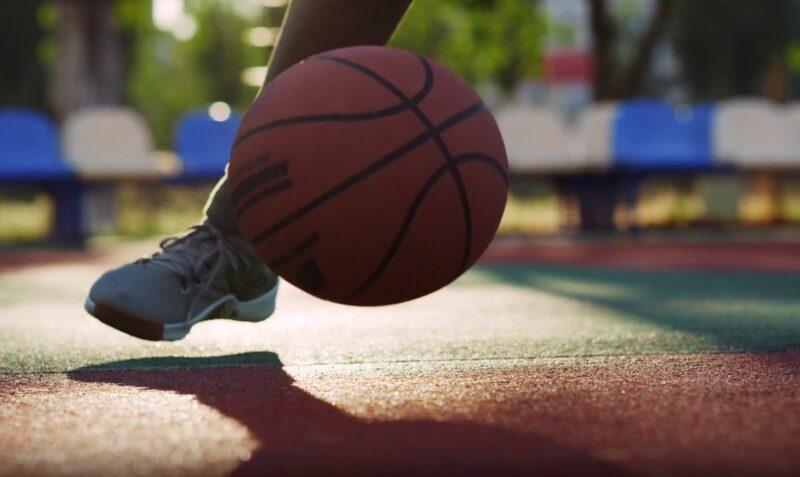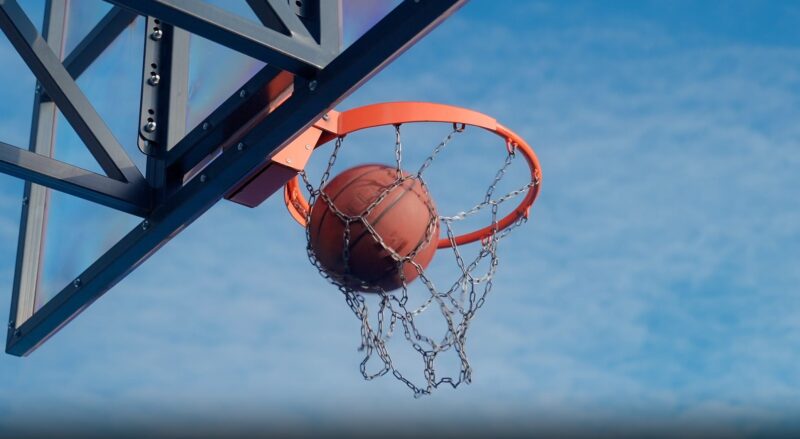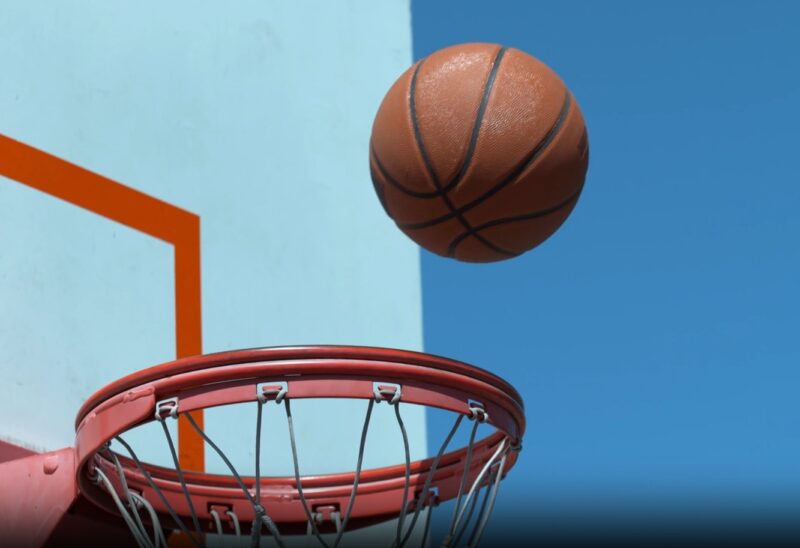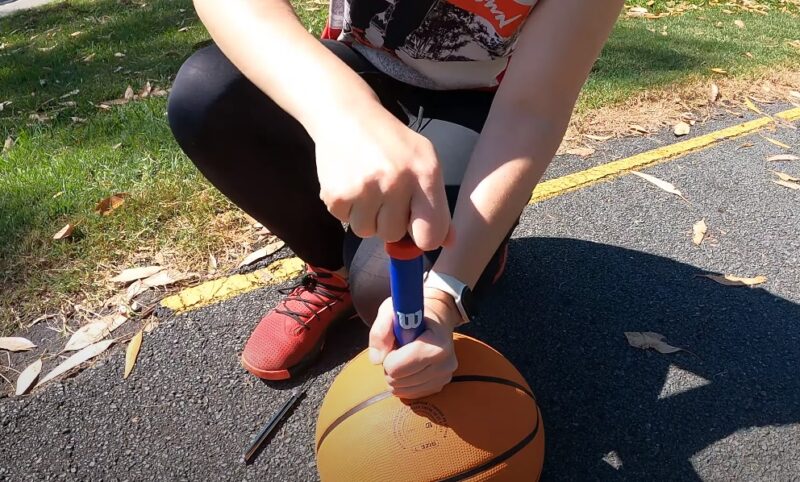The right amount of air ensures that the ball rebounds off the ground and the players’ hands in a predictable and controlled manner, essential for a smooth game.
However, determining the correct air pressure isn’t just a matter of personal preference or guesswork. It involves a specific range that aligns with regulations and the physics of the ball’s design.
This range ensures that the ball behaves consistently, providing players with the reliability they need to execute plays in a desired way.
What is the Optimal Value?
The range is typically between 7.5 and 8.5 pounds per square inch (psi). This standard is not arbitrary; it is carefully chosen to ensure the ball’s optimal performance on the court. At this pressure, the ball achieves a balance between firmness and elasticity, allowing it to rebound effectively off the ground and players’ hands.
This predictability is crucial for players who rely on their skills and the equipment’s consistency to perform at their best. Moreover, this standardization is essential for fair play, ensuring that all players compete with equipment that behaves similarly.
What Can Influence the Air Pressure?

Several external factors can influence the air pressure inside a basketball, necessitating regular adjustments. One significant factor is the ambient temperature. Air expands in warmer conditions and contracts in colder ones. Therefore, a ball that is perfectly inflated in a warm indoor environment may seem under-inflated in a colder outdoor setting.
Altitude is another factor that can affect air pressure. At higher altitudes, the lower atmospheric pressure can make the ball feel more inflated than it actually is. Conversely, at lower altitudes, the higher atmospheric pressure can have the opposite effect.
The material and quality also play a role. High-quality balls made of durable materials are better at retaining air and require less frequent adjustments. In contrast, lower-quality balls may lose air more quickly and need more regular attention to maintain the optimal pressure.
| Feature | Description |
|---|---|
| Optimal Air Pressure Range | 7.5 to 8.5 pounds per square inch (psi) |
| Bounce and Elasticity | Ensures consistent bounce and control during play |
| Game Performance | Affects dribbling, passing, and shooting accuracy |
| Pressure Maintenance | Requires regular checking and adjustment |
| Longevity of the Ball | Proper pressure extends the ball’s usable life |
How To Measure and Adjust?
A reliable air pressure gauge is essential for accurately measuring the ball’s psi. It’s a small investment that can significantly impact the game’s quality. Adjusting is a straightforward process. If the pressure is too low, use a standard pump to add air, checking frequently with the gauge to avoid over-inflation. If it is over-inflated, gently release some air and recheck the pressure. This process may require a bit of trial and error to get it just right.
Regular checks are essential, especially when playing in different environments or after storing the ball for extended periods. A good practice is to check the ball before each use, making adjustments as needed to ensure it always performs at its best.
Side Effects of Incorrect Pressure

An over-inflated ball tends to be harder and less forgiving, making it more challenging to control. It can bounce too high or too erratically, disrupting the flow of the game. This can lead to decreased accuracy in shooting and passing, as players struggle to predict the ball’s behavior.
On the other hand, an under-inflated ball poses different challenges. It may not bounce high enough, making dribbling more difficult and less effective. The softer feel can also affect shooting accuracy, as the ball may not generate enough momentum to reach the basket from longer distances.
Insights from professional players and coaches further underscore the importance of correct air pressure. For example, some of the best shooting guards in the league would immediately request a chance of the ball since even the slightest chance in pressure can worsen the accuracy.
They often emphasize the need for a well-inflated ball to ensure consistency in play. These professionals understand that even slight deviations from the standard pressure can significantly impact their performance and the game’s outcome.
How to Maintain the Right Pressure?
Ensuring a basketball remains at its ideal air pressure is an ongoing responsibility that requires regular attention. Players and coaches should make it a habit to check the ball’s pressure frequently, ideally before every game or practice session. This routine becomes even more crucial in environments where temperature and altitude can vary significantly, as these factors directly impact the air pressure inside the ball.
The process of checking and adjusting the air pressure should be straightforward and quick, especially with the right tools at hand. Using a reliable pressure gauge, one can swiftly determine if the ball requires inflation or deflation. If adjustments are needed, they should be made incrementally, checking the pressure after each adjustment to avoid overcorrection.
Best Practices for Storage and Handling
How a basketball is stored and handled can also affect its air pressure and overall condition. Proper storage is essential to maintain the ball’s longevity and performance. It is advisable to store basketballs in a cool, dry place, away from direct sunlight or extreme temperatures, as these can degrade the material and affect the air pressure.
Handling the ball with care is equally important. Rough surfaces or sharp objects can damage the ball, leading to air leaks. Regular inspection for wear and tear can help identify issues early, preventing more significant problems down the line.
Advanced Tips for Long-Term Care

There are additional steps that can be taken to ensure a basketball maintains its optimal air pressure over time. For instance, rotating the use of multiple balls can help distribute wear and tear, extending their usable life. Also, occasionally deflating the ball slightly when not in use for extended periods can relieve stress on the material.
For those who play in varying conditions, understanding how environmental factors affect air pressure can be beneficial. Being proactive in making adjustments based on anticipated changes in temperature or altitude can keep the ball within the desired pressure range, regardless of the playing environment.
FAQs
Can the type of pump used affect the accuracy of air pressure?
Yes, the type of pump can impact the accuracy of air pressure. Manual pumps are more commonly used but can be less precise compared to electric or digital pumps, which often come with built-in gauges for more accurate pressure measurements.
How often to check the air pressure in a basketball during a professional game?
In professional games, it’s advisable to check the basketball’s air pressure at least before the game, at halftime, and any time the ball is replaced. This ensures consistent play throughout the game.
Is there a difference in optimal air pressure for indoor versus outdoor basketballs?
Generally, the optimal air pressure (7.5 to 8.5 psi) remains the same for both indoor and outdoor basketballs. However, outdoor balls may require more frequent adjustments due to varying environmental conditions.
Can altitude affect the ball’s air pressure even in an indoor setting?
Yes, altitude can affect air pressure inside a basketball even in indoor settings. Higher altitudes can cause the ball to feel more inflated due to lower atmospheric pressure.
How does the age of a basketball affect its air pressure retention?
Older basketballs may have compromised material integrity, leading to less efficient air pressure retention. They might require more frequent checks and adjustments compared to newer balls.
Summary
Ensuring the optimal range of 7.5 to 8.5 psi is not just a recommendation but a necessity for ensuring fair play and the best possible playing experience. Regular checks and adjustments, coupled with proper storage and handling, are simple yet effective practices that can significantly impact the ball’s performance and longevity.
